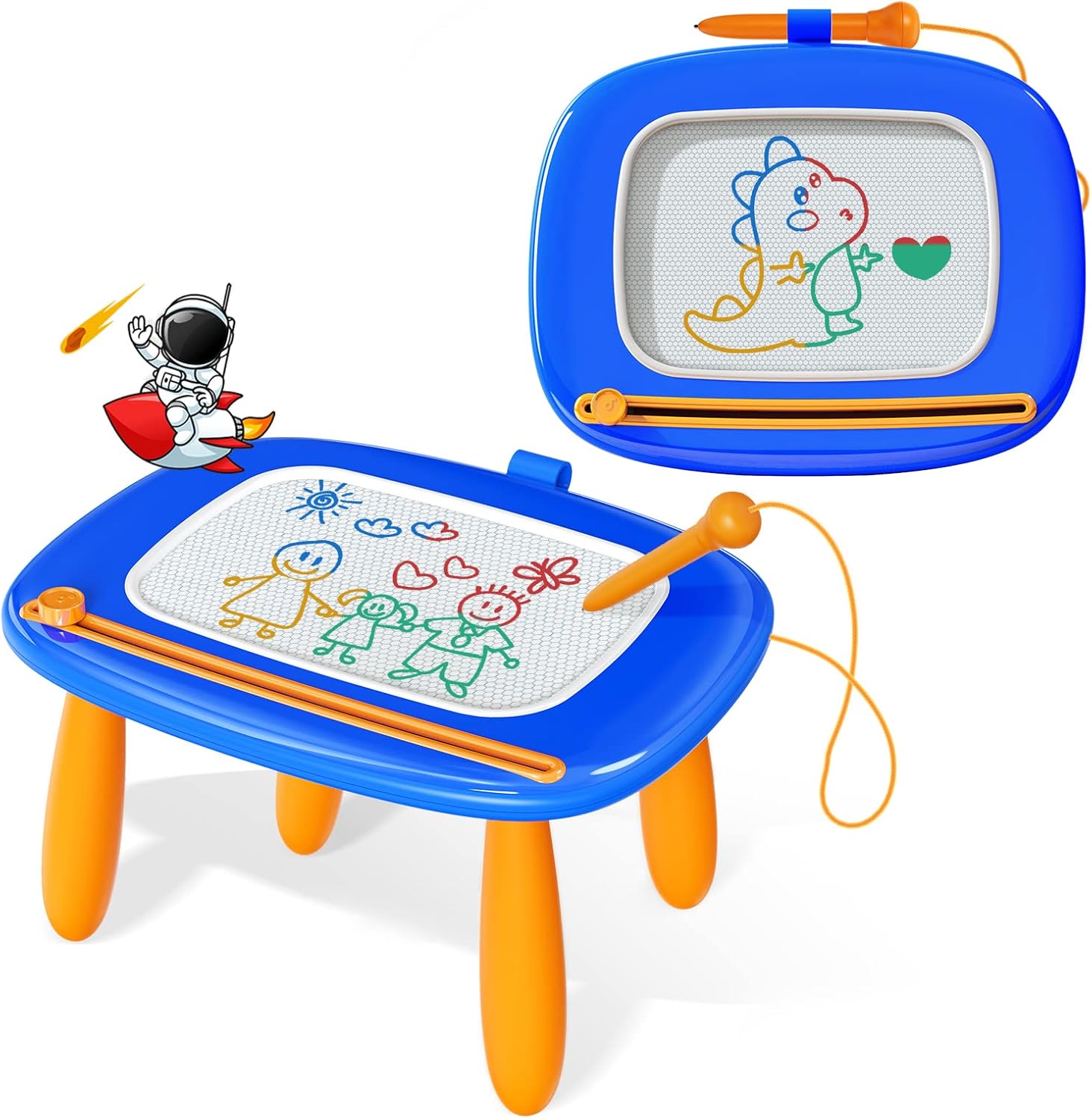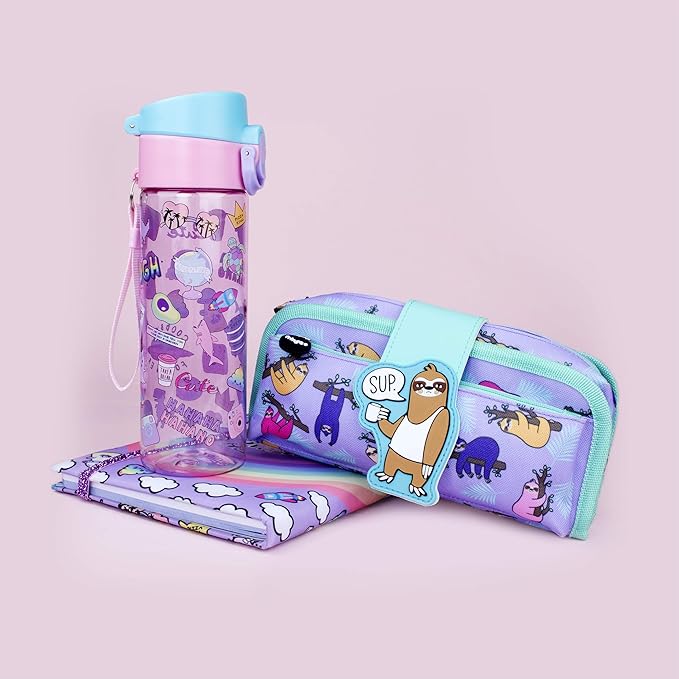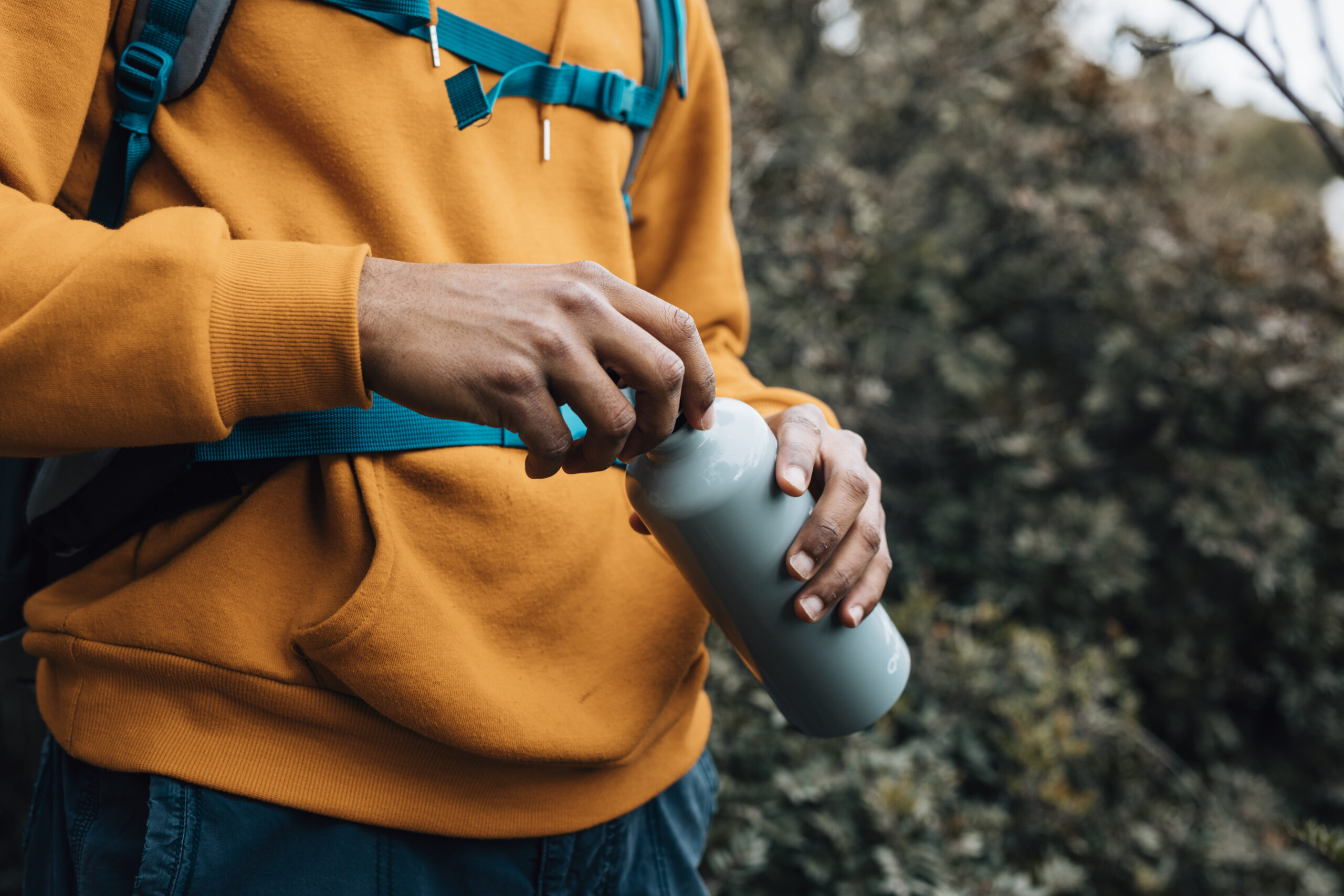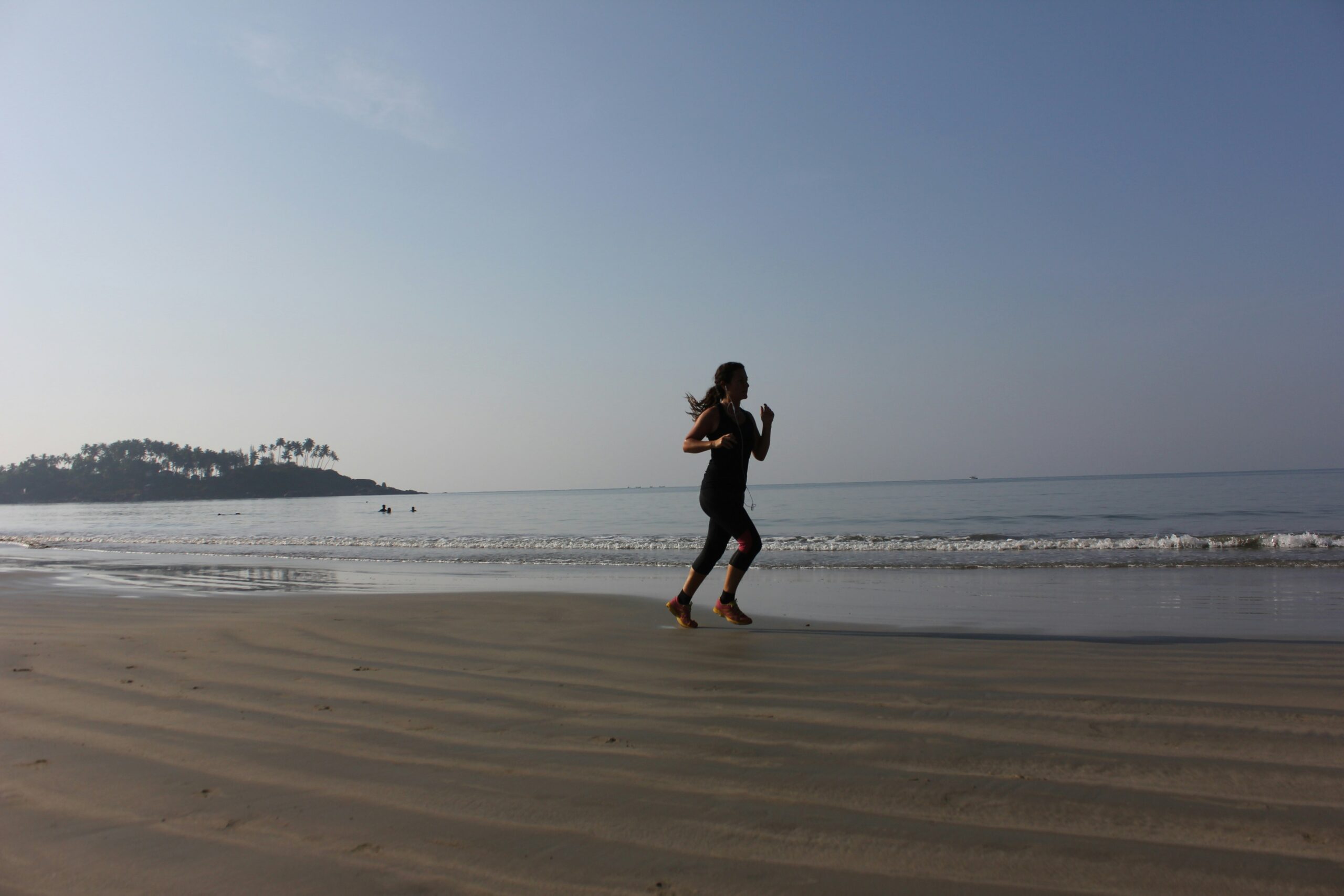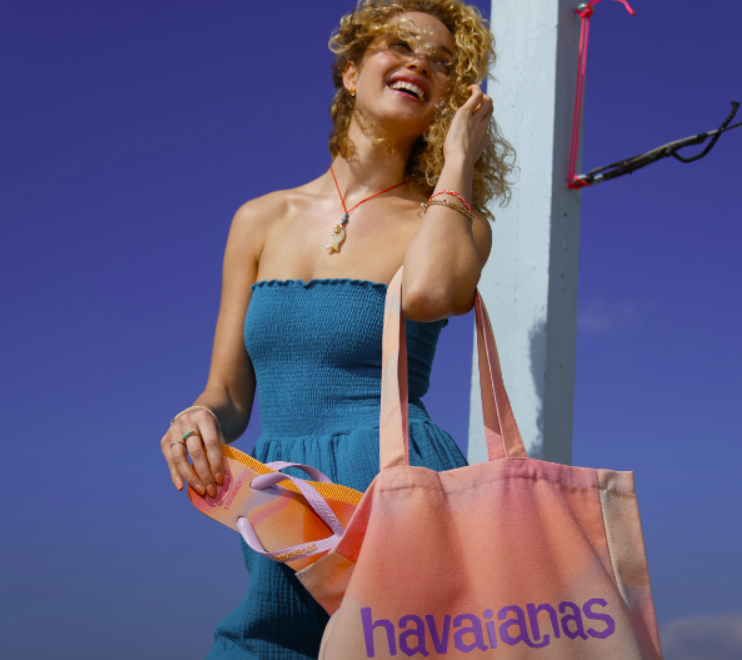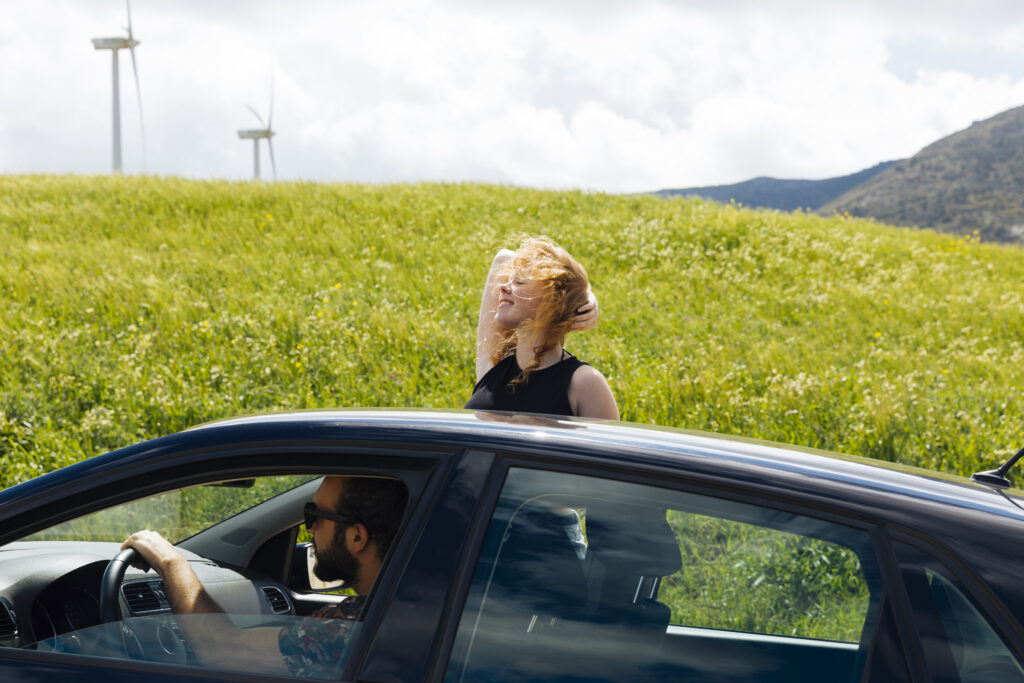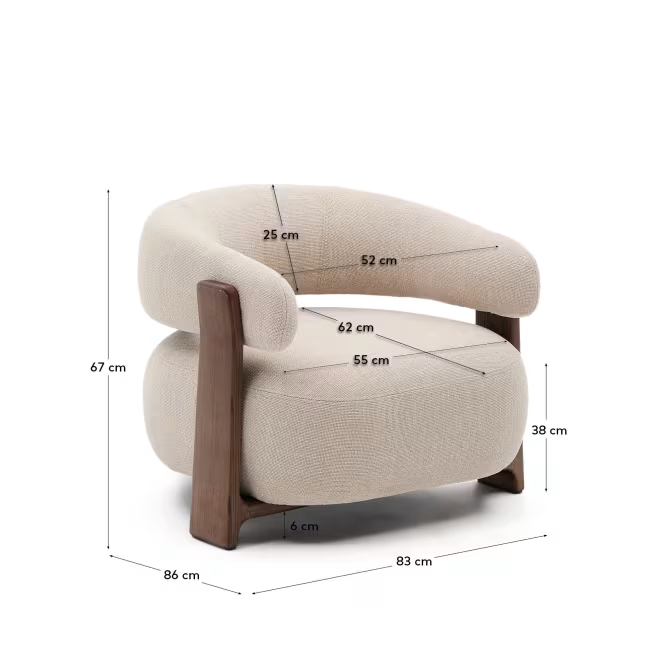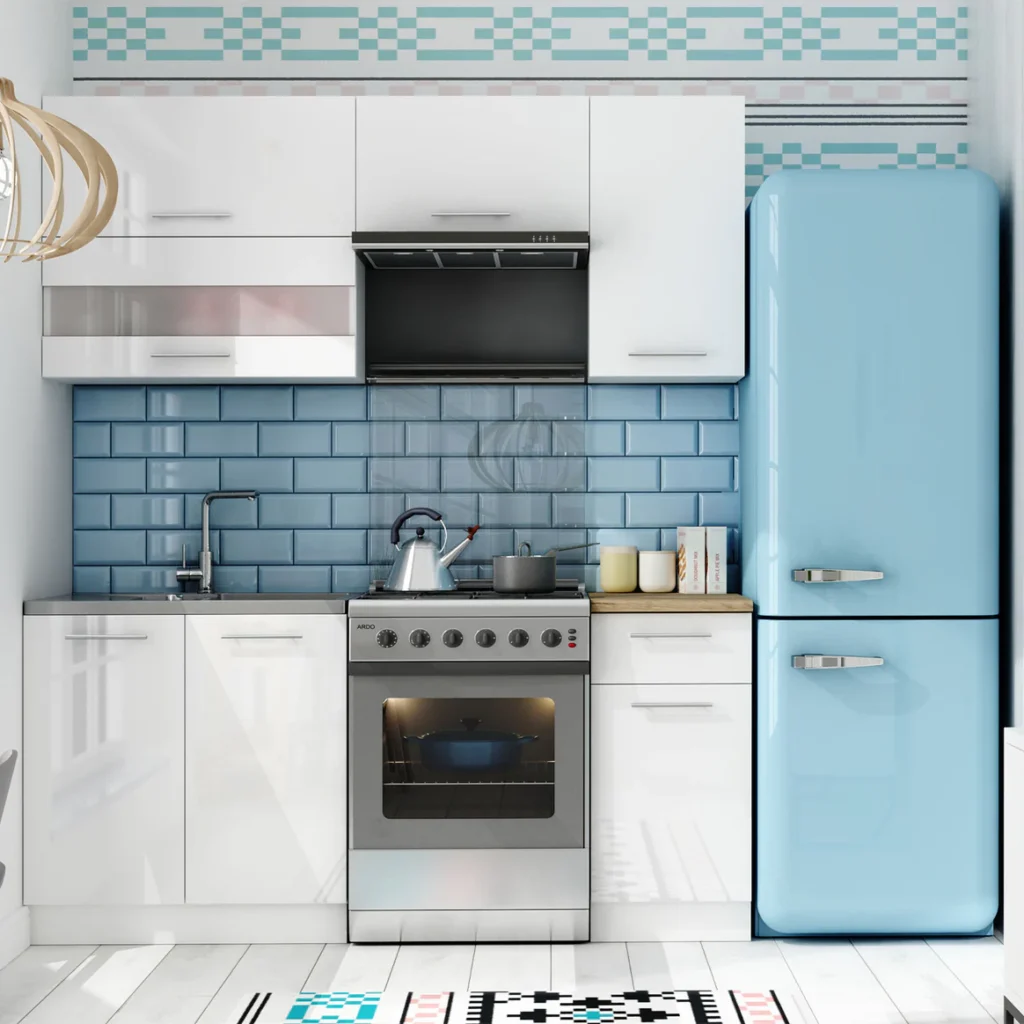There’s the meal you plan and the meal that actually happens—usually with banana on the sleeve, peas under the high chair, and a toddler who thinks gravity is the third course. The Mushie Silicone Baby Bib turns that daily chaos into something gentler: a soft, flexible bib with a deep catch pocket that rescues runaway pasta shells, saves outfits, and shortens cleanup by real, countable minutes. It’s the kind of tiny tool that changes the tone of the whole meal.
In this article, we’ll show you how to get the most out of the Mushie Silicone Baby Bib—from first tastes to full-on “I-do-it-myself” independence. You’ll learn calm setup routines, how to use the pocket to encourage self-feeding success, BLW and puree strategies, what to say when frustration spikes, and the fastest cleaning methods (because your evening is already busy). No tech specs. No prices. Just practical steps parents actually use.
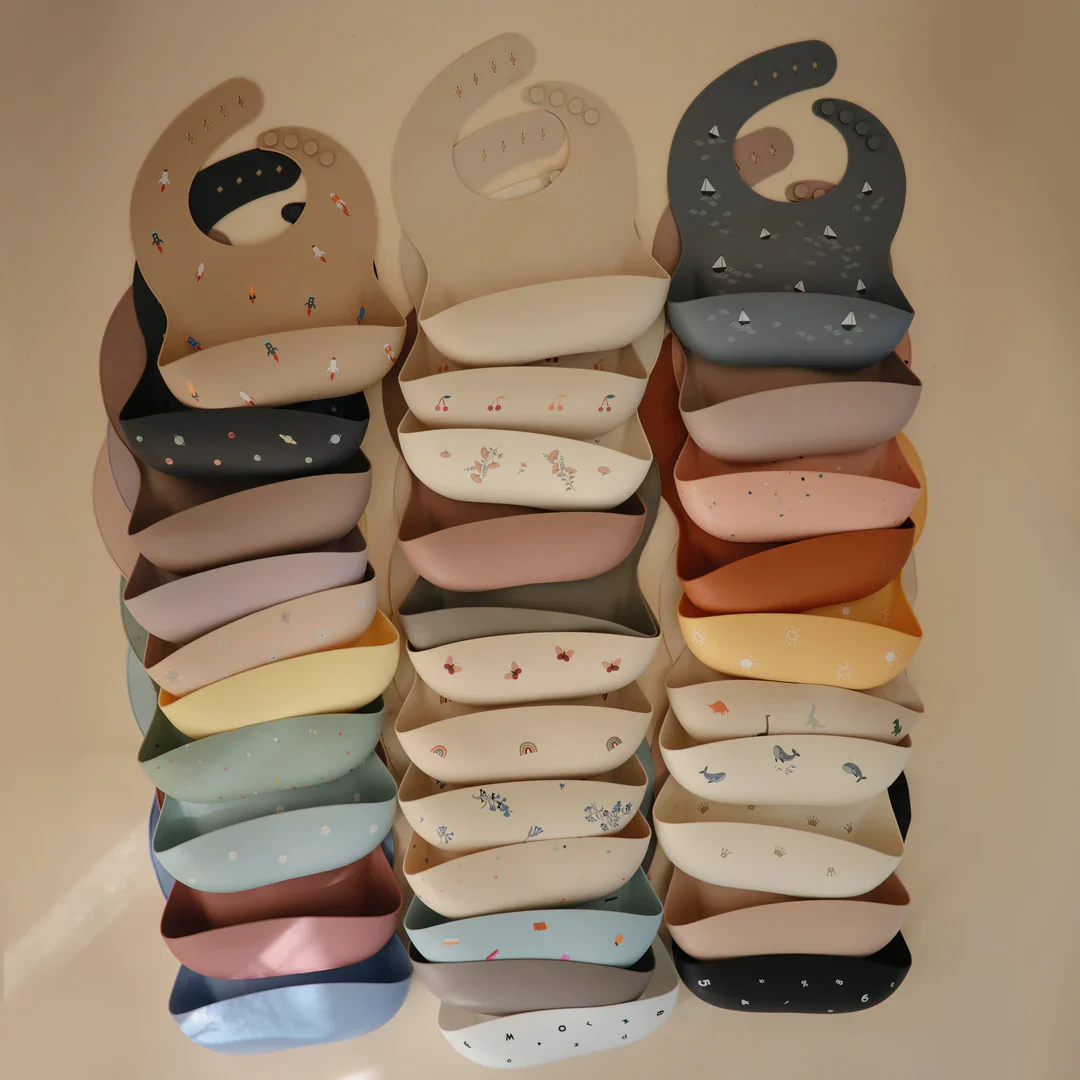
Why the Mushie Silicone Baby Bib Works (Real-Home Benefits)
The magic is simple: soft silicone that sits comfortably, a scoop-style pocket that opens wide, and an adjustable neck that grows with your little eater. The comfort piece matters—you want a bib babies forget they’re wearing. The catch pocket matters more: it turns “dropped food” into “second chance” bites, keeping practice going and mess down. And the design language is pure Mushie—calm colors that make the food look inviting instead of chaotic.
Parent payoff you’ll feel: fewer outfit changes, less tray-to-floor splatter, and a calmer parent voice because cleanup isn’t looming. That’s the quiet superpower of Mushie—tools that make good habits easy.
Set the Stage: A Calm, Repeatable Pre-Meal Routine
- Seat & posture: Upright in the high chair, hips and knees near 90°, feet supported so the body feels grounded. Regulated bodies explore better.
- Bib first, food second: Clip the Mushie Silicone Baby Bib on before baby sees the plate. When the bib is step one, resistance drops.
- Two-texture setup: Offer one easy win (banana coins, soft pasta) + one skill-builder (peas, small toast fingers) so practice stays positive.
- Pocket “show and tell”: Drop one piece into the pocket on purpose. Pinch and retrieve it slowly so your child sees the “save and try again” loop.
The Catch-Pocket Strategy: Turning Drops into Wins
Think of the pocket as your backup plate.
- Demonstrate: “When noodles jump, the pocket keeps them safe.” Retrieve, pause, hand to child.
- Narrate direction: “Food goes table → mouth. Oops? Pocket → table → mouth.” The rhythm helps.
- Celebrate retrieval: When your child fishes out a piece themselves, smile: “You found it! Try again.” Confidence beats correction.
Over time, kids look down instead of overboard, reducing floor throws because the pocket offers an easier target and a second chance.
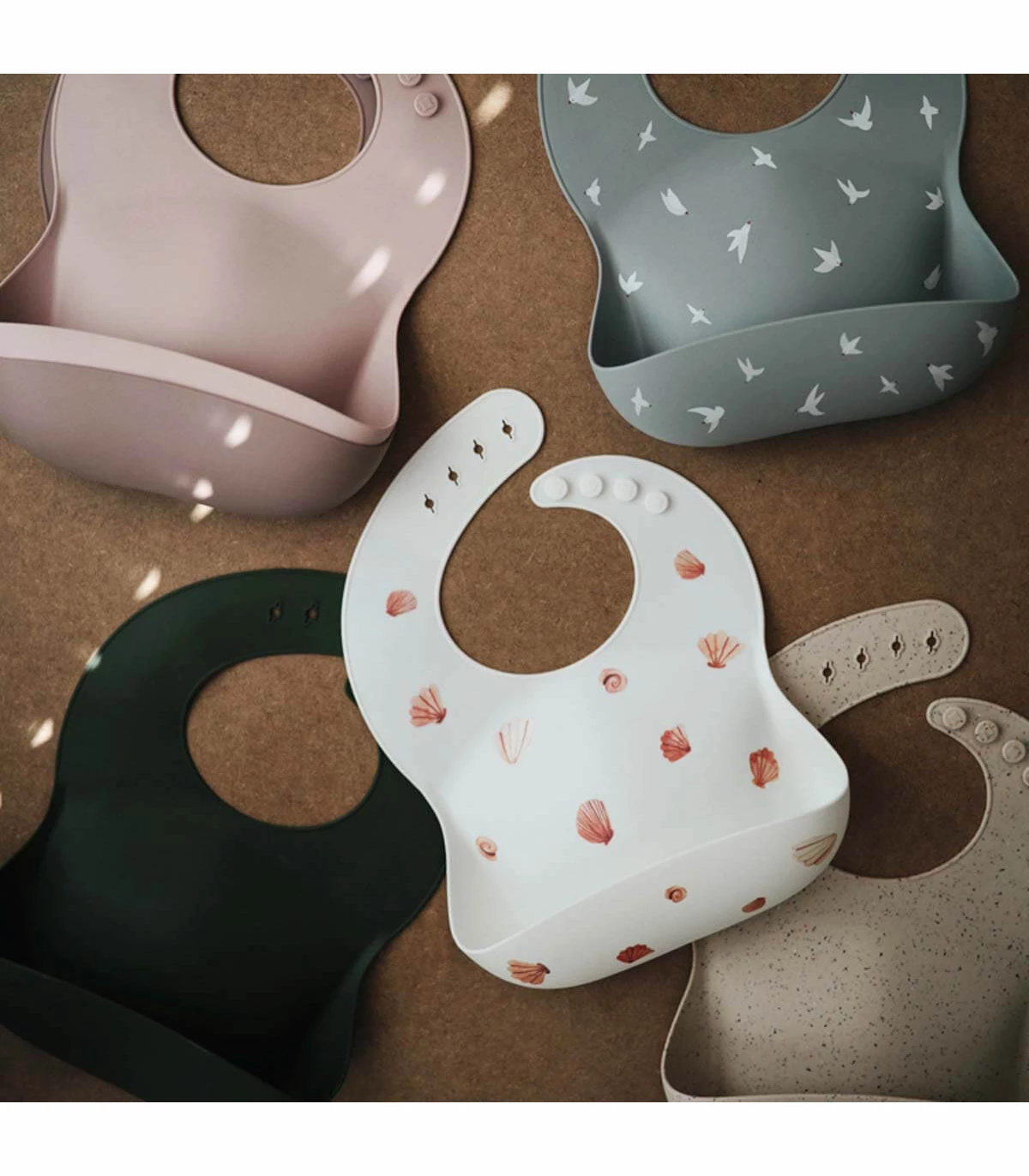
BLW Meets Purees: Both Play Nicely with Mushie
Whether you’re doing baby-led weaning or spoon-plus-finger combos, the Mushie Silicone Baby Bib keeps the experience tactile and low-stress.
- For BLW: Offer graspable shapes (soft veg sticks, ripe pear wedges). Expect drops; use the pocket to keep momentum without you constantly re-plating.
- For thicker purees: Pre-load a spoon, lay it on the tray, and let baby guide it. Misses roll down and wait in the pocket instead of staining the onesie.
- For mixed meals: Start with finger foods to engage curiosity, finish with a few spoonfuls for fullness; the bib handles both flows.
Gentle Coaching Scripts (Because Tone is Half the Meal)
- “You don’t have to like it; you can try it.”
- “Food stays on the tray; the pocket holds your practice pieces.”
- “Slow scoop… and pause.” (Say it as you model.)
- “Sip, set down, bite.” (For cup coordination alongside solids.)
- “We’re learning together; spills help us practice.”
Short, repeatable lines lower the temperature and set expectations without power struggles.
The 10-Minute Cleanup That Actually Takes 10 Minutes
- Remove the Mushie Silicone Baby Bib and empty the pocket back onto the plate to gauge what was actually eaten.
- Rinse the bib under warm water; a dab of mild soap if needed; shake dry and hang by the neck opening.
- Wipe tray and chair first, floor last; a damp microfiber handles 90% of mess.
- Clothing check: if sleeves are clean, you just won the day.
Silicone makes the difference—it releases residue quickly, so you’re not soaking and scrubbing at bedtime.
On-the-Go: Restaurants, Grandparents, Road Trips
- Pack light: Bib + collapsible travel cup + small wipe set. The Mushie Silicone Baby Bib rolls into itself; tuck a spare spoon inside the pocket.
- Table setup: Seat away from aisle traffic; bib on before menus. Order sides that play well with the pocket (soft veg, rice, pasta).
- Grandparent briefing: “This bib catches the drops; we let them retrieve and try again.” Consistency keeps habits aligned across homes.
- Road-trip hack: Clip the bib at pit stops and offer simple finger foods right in the car seat only when parked; the pocket is your crumb control.
Fit & Comfort Notes (Body-Literate, Not Fussy)
- Neck adjustment: Choose the notch that’s secure yet finger-room comfortable. You want steady, not snug.
- Layering: Over a cotton tee for most meals; over a long-sleeve during cooler months. If your child’s tugging at the neckline, pause, re-adjust, and praise calm hands.
- Temperature: Silicone warms quickly to room temp. If it feels chilly in winter mornings, rub it between your hands before clipping on.
Build a Meal Rhythm That Kids Understand
- Start signal: Bib on, hands washed, tray down. Same order every time.
- Tiny portions, frequent refills: Less food on the tray = fewer overwhelm throws. The pocket is safety, not storage.
- Two breaks per meal: Offer a brief sip-and-wipe reset halfway through. The bib stays on during the break so the routine stays intact.
- End signal: “All done” sign, wipe hands, bib off, hands washed again. Predictable endings reduce last-minute table flips.
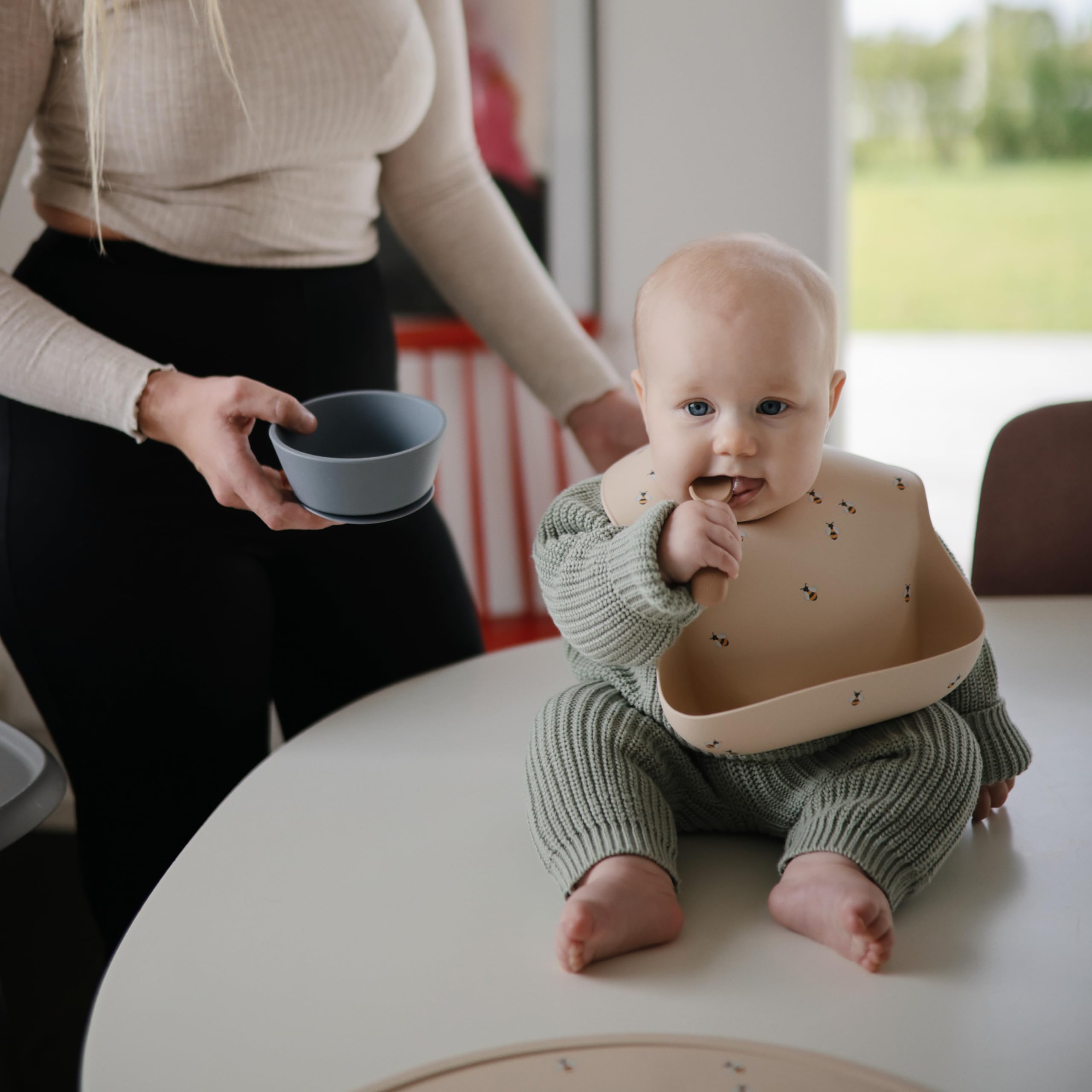
Mini Menus That Respect Small Hands
- Breakfast: Oat fingers + blueberries + yogurt dollops (thick so they stay put).
- Lunch: Avocado toast strips + soft peas + shredded chicken.
- Snack: Banana coins rolled in crushed puffs + cucumber sticks.
- Dinner: Sweet potato wedges + flaky salmon bits + tiny pasta shapes.
Each choice plays to the Mushie Silicone Baby Bib pocket: round pieces roll in, saucy tastes drip in, and small victories stay within reach.
Stains, Odors, and Longevity
- Fast rinse wins: Rinse right after the meal; staining foods have less time to cling.
- Soap choice: Mild dish soap works; avoid harsh cleansers that can dull the finish.
- Sunshine reset: A brief air-dry near indirect light helps keep things fresh.
- Rotation: Keep two Mushie bibs in your drawer—one in action, one drying. It’s the simplest way to stay consistent.
Safety & Supervision Reminders
- Always supervise mealtimes. A good bib reduces mess, not vigilance.
- Keep cords, ties, and distracting toys off the tray; focus stays on food and sipping.
- If frustration spikes, reset: wipe hands, retrieve a piece from the pocket together, try one more bite, then end if needed. Quitting before meltdown = a better next meal.
When to Level Up the Challenge
- Scooping signs: Your child is nudging food toward the pocket for retrieval. Introduce a toddler-friendly spoon and celebrate every attempt.
- Cup confidence: Add three “sip moments” to each meal; the bib covers dribbles so practice feels safe.
- Pinch practice: Peas and puffs. The pocket will collect the misses while fine motor skills catch up.
Gifting the Mushie Silicone Baby Bib (Zero Guesswork)
It’s a baby shower classic because it’s universally useful and looks lovely in any kitchen. Pair the bib with a small silicone training cup or a soft-bristle first toothbrush for an “everyday heroes” gift set. Practical, pretty, and quickly adopted.
Conclusion
Mealtimes don’t need to be spotless to be successful—they need rhythm, comfort, and tools that turn spills into second chances. The Mushie Silicone Baby Bib brings all three: a soft fit babies tolerate, a catch pocket that saves the day (and your floors), and a design that makes your table feel calmer. Start with a simple routine, narrate the “pocket save,” and keep cleanup short and sweet. You’ll feel the difference in your voice, your kitchen, and your child’s confidence—one tidy bite at a time.
FAQ
- When should we start using the Mushie Silicone Baby Bib?
As soon as your baby is sitting with support and beginning solids—typically around the time you introduce first tastes. - How do I stop my child from pulling the bib off?
Adjust the neck so it’s secure but comfy, clip it on before food appears, and praise “calm hands.” If tugging starts, pause and reset. - Does the pocket get in the way?
It sits softly against the torso and opens as needed. Kids quickly learn to look down and retrieve from it—part of the fun. - What foods work best with the pocket?
Anything roll-prone or drippy: peas, corn, pasta, yogurt dollops, small fruit pieces, soft cereal puffs. - Any quick odor fixes?
Rinse right away, mild soap, and full air-dry. For stubborn scents, a brief soak in warm water with a drop of gentle soap, then rinse thoroughly. - Can I travel with it?
Yes—roll it and tuck a spoon inside the pocket. It’s the easiest restaurant upgrade you’ll make. - How many Mushie bibs do I need?
Two is ideal—one in use, one drying. It keeps the routine moving without late-night washing. - Will silicone feel cold?
It warms to room temperature quickly. Rub between your hands before clipping on during chilly mornings. - What if my child refuses the bib one day?
Keep the ritual—bib on → hands washed → tray down—and offer a choice of color if you have two. End the meal early if needed; protect the routine. - How do I know the meal was a success?
You saw curiosity, a few tries, and a calm ending—even with spills. That’s a win the Mushie Silicone Baby Bib helps make repeatable.




